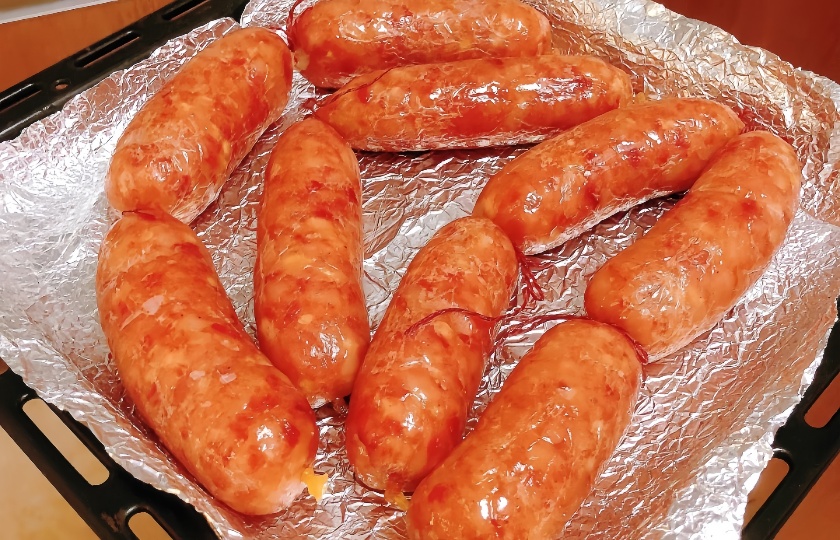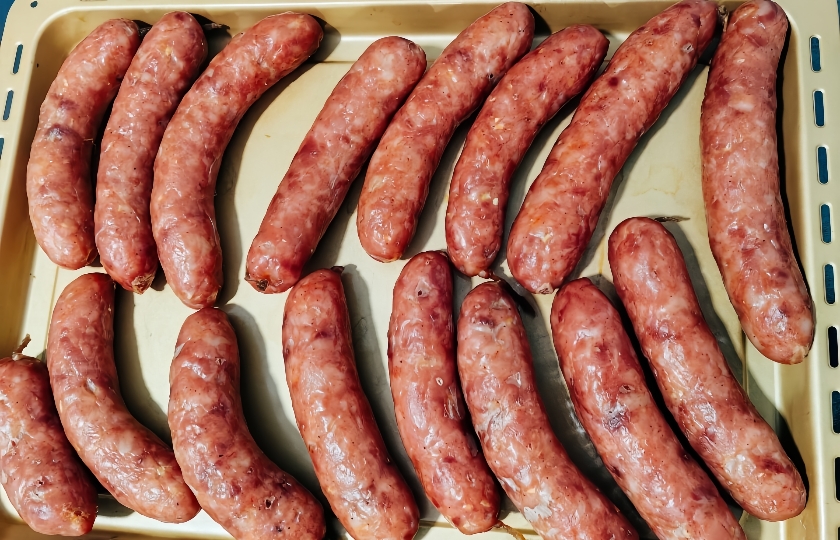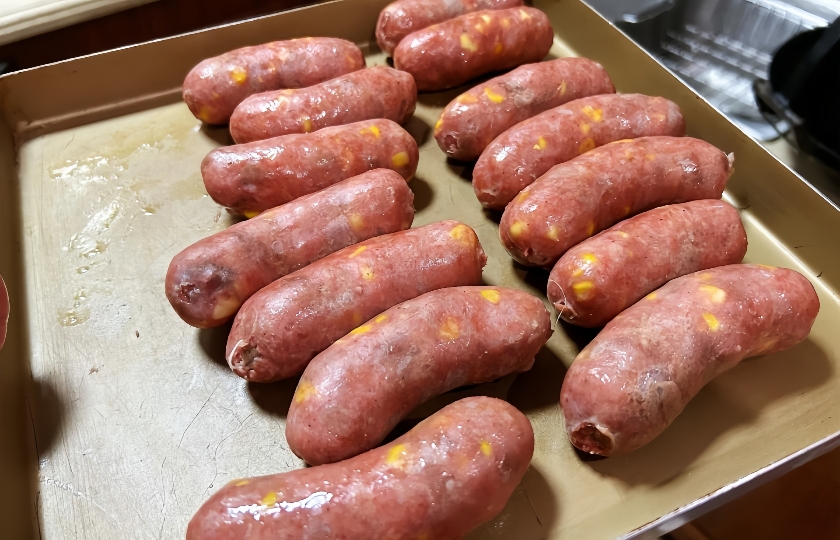Cooking Guide: Cooking Temperature for Pork Sausage?
 Pork sausage is incredibly delicious, whether you're having it for breakfast or as a side dish. However, getting the cooking temperature right is crucial to avoid undercooked or burnt sausages. Let’s dive into this important topic.
Pork sausage is incredibly delicious, whether you're having it for breakfast or as a side dish. However, getting the cooking temperature right is crucial to avoid undercooked or burnt sausages. Let’s dive into this important topic.
What are the temperatures and times for different cooking methods of pork sausage?
Cooking Temperatures by Method
Pan-Frying:
Start by preheating your skillet over medium-low heat, around 265°F to 300°F (130°C to 150°C). This helps prevent the sausage casing from burning while ensuring the inside cooks through. Once the sausages are in the pan, you can increase the heat slightly to 320°F to 355°F (160°C to 180°C). Turn them occasionally to cook evenly. The process should take about 10 to 15 minutes, depending on the thickness. When the sausages are golden brown and a fork or skewer goes through easily, they’re done.
Baking:
Preheat your oven to 355°F to 390°F (180°C to 200°C). This temperature will make the casing crispy and the inside perfectly cooked. Place the sausages on a foil-lined baking sheet and bake for 15 to 20 minutes. Adjust the time based on the size and quantity of sausages. Flip them halfway through to ensure even browning and texture.
Boiling:
Bring water to a boil at 212°F (100°C), then add the sausages. Keep the water at a gentle simmer and cook for 8 to 12 minutes. If you're unsure if they’re done, cut one open; it should be free of pink.
How to Tell if Sausages Are Cooked?
Visual Inspection:
Cooked pork sausages will change color. Raw sausages are bright, while cooked ones turn a deeper shade, like a dark red. The casing becomes more transparent for thin sausages, revealing the meat inside, while thicker casings tighten up.
Touch Test:
Gently poke the sausage with a fork or skewer. Cooked sausages feel firm and springy. If they’re undercooked, they’ll feel soft and might stick to the utensil. This method requires some practice to perfect the pressure.
Cut-Open Test:
The most straightforward method is to cut open a sausage. If the interior is uniformly colored with no pink or red spots, it’s done. This is the most accurate method for thicker sausages but can compromise presentation if you want to keep them whole for serving.
Hope this helps! If you have any more questions, feel free to ask.

Is It Okay for Pork Sausage to Be Pink?
It depends on the situation. If freshly cooked sausages are pink, it might mean they weren’t cooked long enough or at a high enough temperature, especially with thicker or denser sausages. From a food safety perspective, undercooked sausages can be risky, as raw pork may contain bacteria or parasites like tapeworms or trichinella, which can cause illness.
However, some specially processed sausages, which include nitrites as preservatives and color enhancers, might remain pink even when fully cooked. This is normal and safe, as these sausages undergo strict quality control, and the nitrite levels are within safe limits.
If you’re unsure why the sausage is pink, it’s best to check the packaging or contact the manufacturer to confirm if it’s due to processing. If you’re cooking them yourself, to be safe, ensure the sausages are fully cooked with no pink areas.
Can You Eat Slightly Undercooked Sausage?
It’s best not to eat slightly undercooked sausage. From a food safety standpoint, if pork sausage isn’t fully cooked, it might still harbor harmful bacteria, viruses, and parasites. Pork can contain parasites like tapeworms and trichinella, which can cause health issues such as stomach pain and diarrhea, and in severe cases, affect other organs.
In terms of taste, undercooked sausages might not be as enjoyable. They can be soft but lack the tenderness of properly cooked sausages and may have a raw taste that affects the dining experience.
However, if the sausage is of high quality and specially processed to be safe when not fully cooked, such as those labeled "safe to eat raw," it can be consumed as is. If there’s no such label, it’s best to cook the sausage thoroughly for your health.

How Many Times Can You Reheat Cooked Sausage?
It's best to reheat cooked sausage only once. Repeated reheating can degrade the quality and increase the risk of bacterial growth. For food safety, try to limit reheating to 1-2 times. Each time you reheat, the sausage's texture and nutritional content can change, and it becomes more susceptible to microbial contamination. After reheating, sausages are more prone to bacterial growth, especially if stored in warm conditions.
If stored properly in the fridge, reheating within 2-3 days is generally safe. Make sure each time you reheat, the internal temperature reaches at least 160°F to kill most harmful bacteria.
Reheating Methods
Microwave: Be sure to control the time and power to avoid uneven heating.
Steaming: Once the water is boiling, steam the sausage for 5-10 minutes until fully heated through.
How to Tell if Pork Sausage Has Gone Bad?
Appearance: Fresh sausages have a natural, even color. If you notice discoloration like gray, black, or white/green spots, it might be spoiled. The casing should be smooth and snug. If it’s loose, wrinkled, or has slime, be cautious.
Smell: Fresh pork sausage has a distinct meaty aroma. If it smells sour, rotten, or has a strong chemical odor, it’s likely spoiled.
Texture: Good sausage feels firm and bounces back when pressed. If it’s mushy, doesn’t spring back, or feels sticky, it might be bad.
Expiration Date: If the sausage is past its expiration date, it’s best not to eat it, even if it seems fine, as the risk of spoilage increases.























